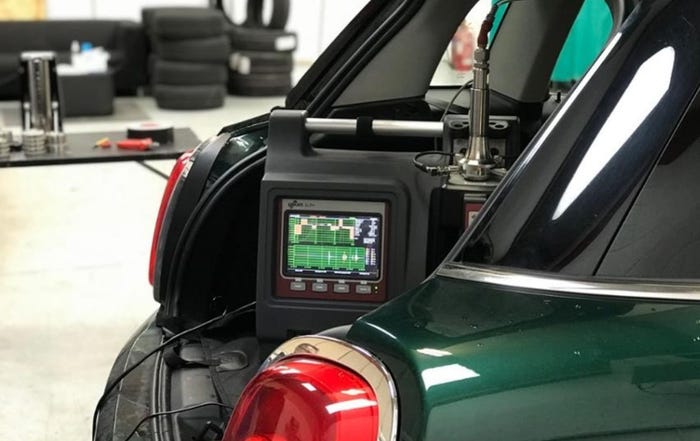Advantage: Aluminum
An innovative metal-forming process developed for automotive parts by General Motors Corp. could replace steel with aluminum for numerous applications across the auto maker's lineup. Called quick plastic forming (QPF), the proprietary technology overcomes the forming limitations of aluminum. With QPF, GM can form more complex shapes with aluminum than steel. This is a breakthrough, says Alan Taub,
March 1, 2004

An innovative metal-forming process developed for automotive parts by General Motors Corp. could replace steel with aluminum for numerous applications across the auto maker's lineup.
Called quick plastic forming (QPF), the proprietary technology overcomes the forming limitations of aluminum. With QPF, GM can form more complex shapes with aluminum than steel. “This is a breakthrough,” says Alan Taub, GM executive director-Science Laboratories.
QPF also enables parts consolidation, which reduces manufacturing complexity, cuts down on squeaks and rattles and diminishes corrosion.
OEMs increasingly are using aluminum because it is lighter than traditional steel. The competition between steel and aluminum is the biggest battle in the materials industry.
Aluminum's growth, however, usually has been restricted to low-volume programs because it costs more than steel. Design can be an issue, too, as aluminum stampings are more rigid than steel and prone to springing back to their original shape after being formed.
GM will focus its QPF efforts on closure applications such as hoods, decklids and body panels — steel's primary automotive function. The process was used to make the hatch for the '04 Malibu Maxx, which launched in late 2003.
“QPF gives us greater flexibility to create body panels with eye-catching shapes at a greater complexity of forms at production volumes of 100,000 units per year, not just concepts and low-volume niche vehicles,” says Taub, who adds the 100,000-unit barrier eventually may be broken.
The effect of GM's process on aluminum and steel suppliers could be monumental, although GM downplays that scenario. “I think it's difficult to say that,” Paul Krajewski, GM staff research scientist, tells Ward's. “When you look at materials solutions, the steel industry has done a great job. It's going to be a continued competition.”
Aluminum is the third most-used material by the auto industry, surpassing plastic in 2001 but still far behind steel and iron.
“Aluminum still has some big problems — it's five to six times more expensive than steel per pound,” says Ron Krupitzer, American Iron and Steel Institute automotive applications senior director. “But clearly it's a technological improvement. It puts more pressure on us to produce better grades of steel.”
QPF also could quickly expand use of magnesium, an even lighter and more expensive metal that currently is used stingily by auto makers.
GM first tested QPF to make the aluminum decklid on the low-volume '99-'02 Oldsmobile Aurora. Delighted with the results, GM implemented two QPF forming cells at its New Hudson, MI, Metal Fabricating Div. plant in 2003.
The process allowed GM to cut Malibu Maxx's liftgate weight from 39 lbs. (18 kg) to 20 lbs. (9 kg) and make the entire outer panel as one aluminum piece instead of two — one steel and one polymer part that later would need to be joined together.
Other QPF programs at GM are on the way. “There are plans for future applications going forward,” Krajewski says. “You won't have to wait that long.”
GM declines to disclose the capacity of the QPF operations at its New Hudson plant.
More than 35 GM researchers developed QPF over a 6-year period from a blow-forming aluminum process used in the aerospace industry. GM holds roughly 40 issued and pending patents for the technology.
The development effort included making an entire car using QPF — the body consisted of only 10-15 parts, says Larry Burns, GM vice president-Research and Development and Planning.
QPF is carried out in a large press, like traditional stamping processes. But it uses high temperatures, about 662°-752° F (350°-400° C), to improve the formability of aluminum so complex shapes can be formed.
High-pressure air and a hydraulic press are used to shape the hot aluminum sheet. “So we've got a way to take weight out of the vehicle and give our designers greater flexibility,” says Taub.
Besides aluminum and magnesium, QPF could be used to form parts from titanium, a lightweight metal alloy rarely used by auto makers because of its high cost.
About the Author
You May Also Like



